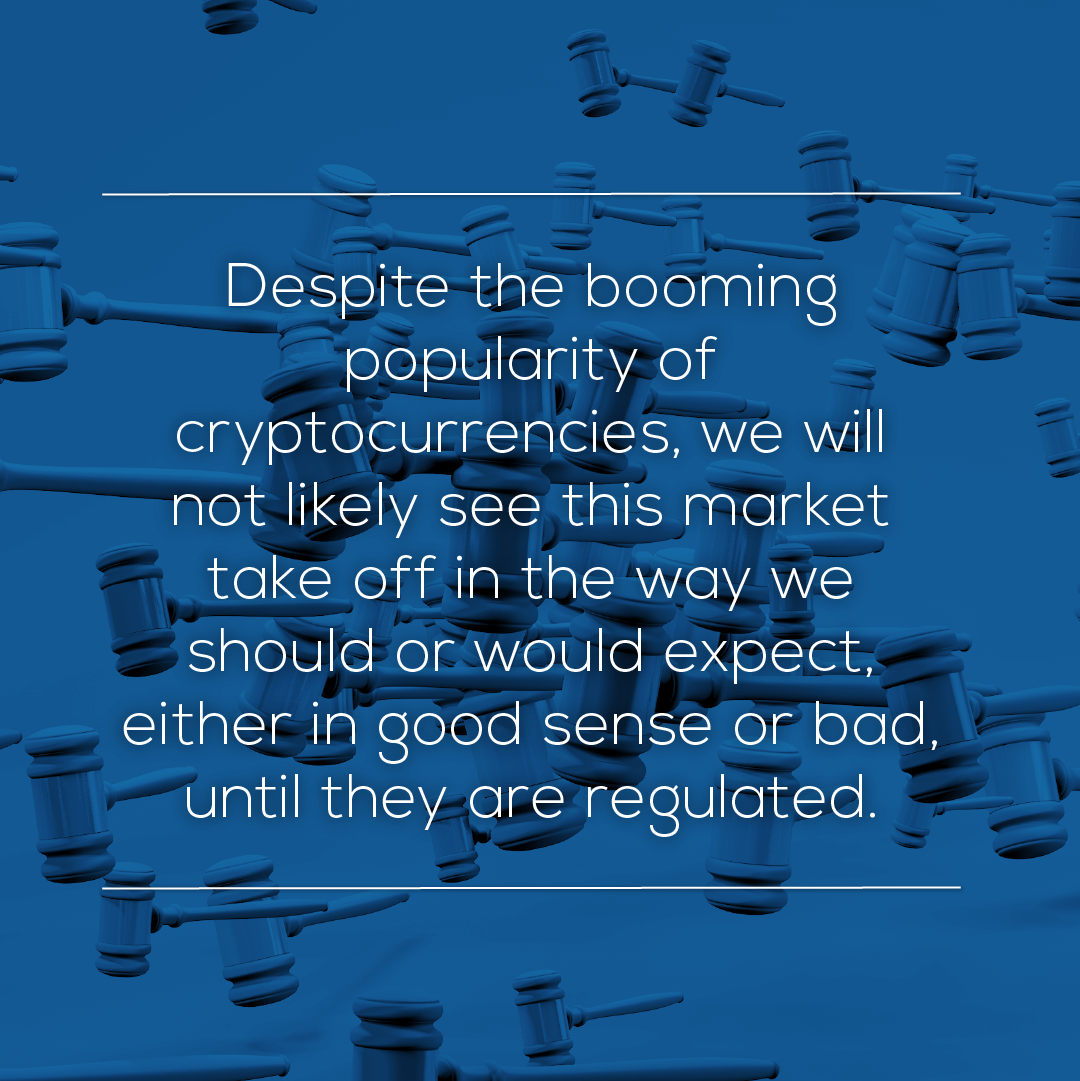Technology has not only changed the way financial services are delivered and consumed, but also has led to the creation of entirely new asset classes. The surge in popularity of Bitcoin and other cryptocurrencies could scarcely have been predicted before it happened and, in many ways, regulators are still trying to determine the most effective way to monitor and govern these new asset classes.
 Regulation
Regulation
In the crypto market, where assets are technically generated, this has created a gap in which self-regulation is coming into play before external regulation does. The market itself is still struggling with how to regulate such an anonymized and entirely new asset class.
As a result, firms are taking wildly different positions on crypto, ranging from openly welcoming it to not wanting crypto to be sold through any of their advisory services. But, with the overall crypto market forecast to hit $3 trillion by the end of 2018, the regulatory questions here can no longer be ignored. Even now, we’re starting to see financial assets, such as futures, with crypto underlines.
The difficult piece of this puzzle from a regulatory perspective is that the crypto market goes far beyond the typical technology-related investment like say, Apple, a company producing the technology. Now the technology produces its own content; Bitcoin and other cryptocurrency arise from technology itself.
Challenges for risk managers
Despite the booming popularity of cryptocurrencies, we will not likely see this market take off in the way we should or would expect, either in good sense or bad, until they are regulated. Take the launch last year of Europe’s first Bitcoin mutual fund. Even this is classified as an alternative investment fund, is not traded on an exchange and does not fall under the European mutual fund structure known as UCITS.
For the risk manager, crypto poses a specific challenge as well. The role of a risk manager is to watch for the investor and on behalf of the investor, to help them understand what kind of risk they are taking. In the world of crypto, it is very difficult to ascertain where your exposure really is.
But this is not a new phenomenon; technology has nearly always moved faster than laws do. Ultimately, for the regulator to be successful, they must acknowledge this new asset class is as much about the underlying technology as the assets themselves.
Conclusion
In order for a global standard of acceptable governance to be established, regional regulatory bodies and leading technology market participants themselves will need to navigate this new asset class – and any that may arise in the future – in tandem and in collaboration.
{{cta(‘e57b1f79-d3ba-48a5-8e93-0d738b17353b’)}}